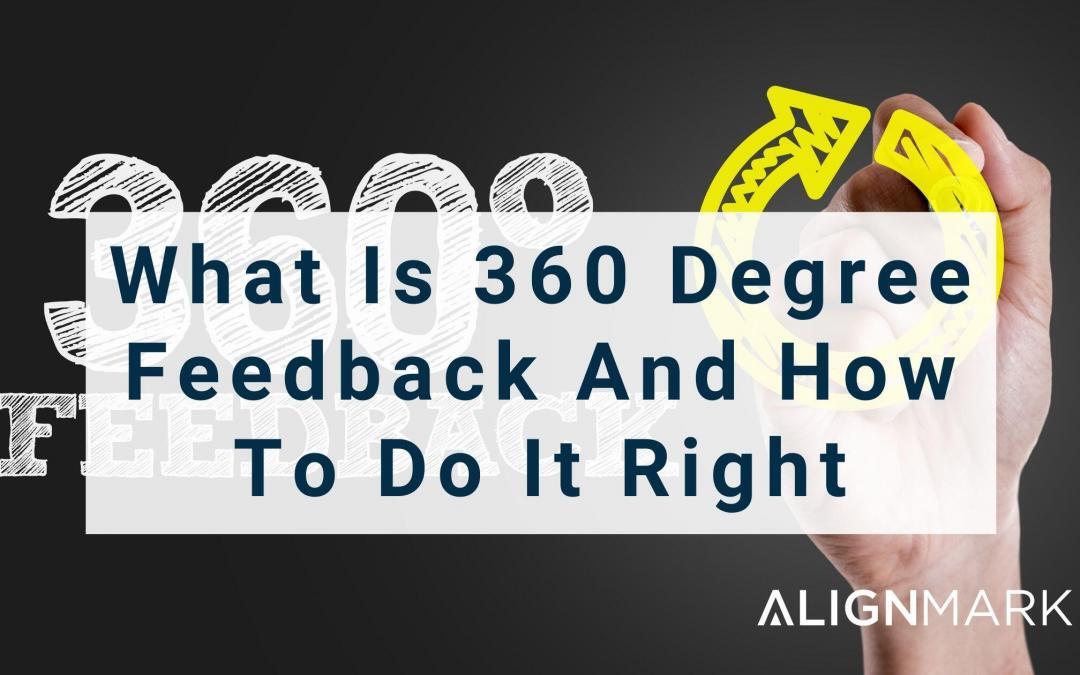360 degree feedback is a great tool to evaluate and benchmark leaders in order to build development plans that promote behavior change in areas where change is required. Ultimately the behavior change that occurs will have a direct impact on an organization’s bottom line.
Table of Contents
History
360-degree feedback evaluations date back to the 1950’s when Esso Research and Engineering Company (Exxon Mobile) began to use them for their employees. While the process and gathering of data has evolved over time through the introduction of technology, the need for good information and making the greatest use of that information has not. More information can be learned about the origins of 360 degree feedback here.
What is 360 degree feedback?
360 degree feedback is a process by which other groups of people (including direct reports, peers, superiors and potentially even your customers) evaluate you through a survey process. The person being evaluated (the focal participant) is also given an opportunity to evaluate themselves as part of the process. The end result is a feedback report that shows the focal leader how he/she perceives themselves versus how others perceive them. The 360 feedback evaluation is used by many companies to help determine areas for improvement within their leadership skills, and is often used at all levels throughout the organization. The idea is to help the focal participant understand how they are perceived in a constructive manner which can assist them in taking ownership of their development.
Here are a few applications of the 360 degree feedback process:
- As part of the performance appraisal process
- To benchmark leaders in order to create and conduct group training needs analyses
- To provide good information that allows leaders to create an effective individual development plan
- To increase team communication
A few of the Benefits of 360 degree feedback include:
- A more well-rounded view of behavior from multiple raters builds trust for the person being evaluated which may lead to acceptance and positive response to behavior change
- Anonymity of rater groups leads to more candid feedback
- Increased performance through good, behaviorally based feedback and development
How to do 360 degree feedback right.
We have established what 360 degree feedback is and how effective they can be, now let’s focus on how to do it right.
Follow these 7 steps to ensure you do 360 feedback right:
1. Leadership Team Buy-In
First and foremost, you need to be sure your leadership team has bought into the process and communicated the importance of the process to the rest of the organization. This helps ensure that the process doesn’t stop with the generation of the feedback report, but rather the feedback report becomes the beginning of an on-going development process.

2. Set The Stage
Set the stage with the entire group that will be involved as evaluators, focal participants, customers and so on. 360 degree feedback projects can be a great way to rally the team around performance improvement, team building and making sure everyone feels like they have a voice. Don’t fall into the trap of using 360 feedback as a way to just review a person and put them on a performance improvement plan. This can diminish trust in the team and lessen the impact the 360 process will have on development.
3. Determine Resources
Determine the best resources available to conduct the 360 degree feedback process. This could be through internal resources, external resources, or a combination of both. Choose a system that meets your needs and is easy – this should not be a complicated process – not with today’s technology.
4. Don’t Rush
Allow for enough time. There is no sense rushing the process, be sure you have enough time to send the surveys, have them filled out, review the reports before sending to the focal participant, give the focal participant time to review and finally set aside enough time to have the focal participant review with their manager.
5. Kick-Start The Development Process
360 degree feedback should start the process of development, not end it. It is easy to go through this process, get the end report and let it sit in the file cabinet until the next year. Use the 360 degree feedback report to kick-start the development process by turning it into a development plan for the focal participant. There is no better time to get them working on changing the behaviors that were identified in the report than right after they receive it.
6. Use coaches
Now that the focal participant has a plan, empower them with a coach to help them develop these new behaviors they need as well as hold them accountable. Again, this coach can be an internal resource, external resource, or a combination of both.
7. Rinse and repeat
The 360 degree feedback process is also a great tool for measuring progress of the development that occurred. After a focal participant has gone through this process (feedback and development), conduct the survey again 6 months later. This allows for a very specific measure of how much the person has improved in the areas that were included in their development plan.
In conclusion, 360 feedback is a powerful process that can lead to behavior change for the focal participant. Use this powerful tool effectively and you will see drastic changes throughout your organization.
To learn more – please check these resources:
Related Resource: 360 degree feedback – Your Complete Guide
Related Blog Post: When to use 360-dgree feedback in your organization


 Dr. Jaffee (M.A., Ph.D.) is a recognized expert in the field of assessments, and has created effective HR Solutions used by millions of people.
Dr. Jaffee (M.A., Ph.D.) is a recognized expert in the field of assessments, and has created effective HR Solutions used by millions of people.